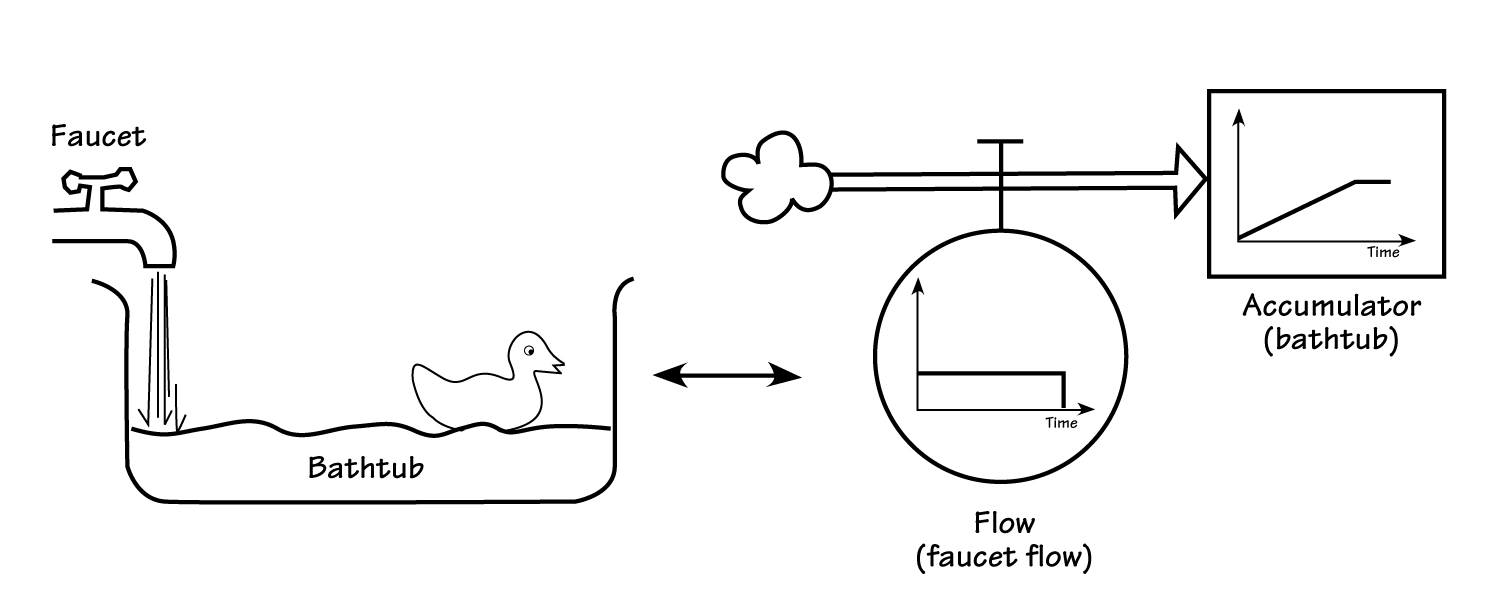**Pattern Name:**
Stock Flow Model
**Introduction:**
What is worth monitoring and measuring?
**Illustration:**

Bathtub Dynamics. source ![]()
**CONTEXT:**
Successful relocalization requires activists to clearly See the Systems they are acting in. When groups act together, an agreed mutual understanding of the way our neighborhood system works is invaluable. It allows us to understand the root causes of the problems, the leverage points for fixing them and the likely consequences of our actions.
**PROBLEM:**
**We cannot simulate a Causal Loop Model to understand how it will behave.**
Causal Loop Models focus on feedback and so **fail to recognize the role of accumulation in the system**. This becomes apparent when we consider feedback loops including accumulations eg births affecting population. In this case our CLM would show the relationship as supporting (ie moving in the same direction)....but less births would not mean less population!
**Forces:**
**THEREFORE (SOLUTION):**
**Create a stock flow model of the structure of the system in focus.**
**Actions:**
**Consequences:**
The stock flow diagram will help develop a more subtle view of the system: It forces us to think about the actual mechanics of **accumulations and the inflows and outflows**, which will often be the **leverage points** in the system. It also makes us think about the actual units moving through the system, which in turn allows us to **identify potentially hidden variables**.
**Known Uses:**
Whenever we plan to develop a calibrated System Dynamic Model the first step is to create a Stock Flow Model structure.
**RELATED PATTERNS:**